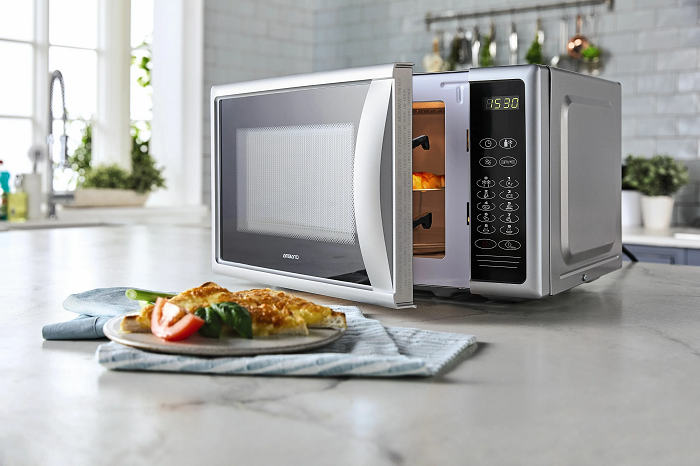Owning a GE microwave offers a multitude of benefits owing to its superior design, making it an elegant addition to any contemporary kitchen.
Nonetheless, even the most reliable appliances may encounter occasional issues. Familiarizing yourself with troubleshooting techniques is essential for maintaining optimal performance.
General Electric Microwave Oven Troubleshooting Guide
This guide is designed to aid you in identifying common issues, offering practical tips, and elucidating how to interpret error codes specific to your GE microwave model.
Reset It
To enhance your microwave’s performance through a reset, adhere to these steps:
– Press the “Off/Clear” button: This action clears the display and initiates an automatic reset.
– Disabling the “Control Locked” child lock: Hold the “Off/Clear” button for approximately three seconds.
– Accidental reset: If the “Off/Clear” button is inadvertently pressed during cooking, consider resetting your device.
– Hard reset: Unplug the appliance, allow a brief interval, then reconnect. This process clears the microwave’s memory and addresses various issues.
– Setting the clock: Utilize the clock button and adjust the dial to establish the correct time.
Runs But Doesn’t Heat
If your microwave operates but fails to generate heat, a malfunctioning magnetron may be the culprit. This component, integral to the high-voltage circuit responsible for heating, often manifests issues. A blown fuse is frequently implicated, especially if other functions remain operational. Consider fuse replacement if you observe:
– Lack of heating
– Unusual burning odors
– Snapping or arcing sounds
Furthermore, inspect:
– Timer button: Ensure it wasn’t inadvertently activated.
– Door safety: Confirm proper closure by firmly opening and closing the door to engage safety features.
Safety Note: Due to the presence of a high-voltage capacitor capable of retaining charge even when unplugged, DIY repairs on microwaves are discouraged. Consultation with a professional technician is advisable.
Checking and Replacing a Blown Fuse
To ascertain whether a fuse is blown:
1. Remove the grill.
2. Inspect the control panel for a protruding screw; a blown fuse will cause panel tilting.
3. Identify the fuse block; visibility indicates a blown fuse.
4. Examine fuses, noting burn marks or melted filaments.
5. Test ceramic fuses using a continuity tester or ohmmeter; intact fuses display zero readings.
Understanding Error Codes
GE microwaves utilize fault codes to aid in diagnostics. A power interruption of 30 seconds may reset the microwave, resolving error codes. Common fault codes include:
– F1 to F10: Indicate various component malfunctions.
– Probe Error: Signifies issues with temperature sensing.
– 888, 8888, or PF: Typically associated with power interruptions.
Circuit Breaker Tripping
Circuit breaker trips may result from electrical overloads. Options for resolution include:
– Outlet Variance: Try alternate outlets, preferably with higher electrical capacity.
– Separate Circuit Connection: Consider connecting the microwave to a dedicated circuit.
– Professional Consultation: Persistent issues warrant inspection or replacement by a qualified technician.
Troubleshooting the Keypad
For unresponsive touchpads despite functional display, disconnect the device, access the membrane switch, and remove the cabinet.
Reasons to Choose Onefservice
Opting for a reputable service provider like Onefservice ensures professional, safe repairs, prolonging your appliance’s lifespan while minimizing risks.


